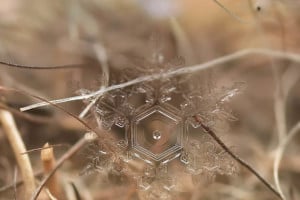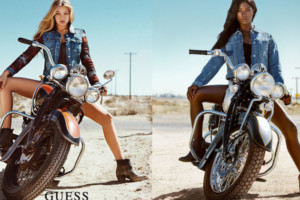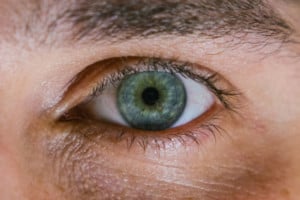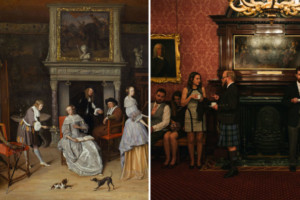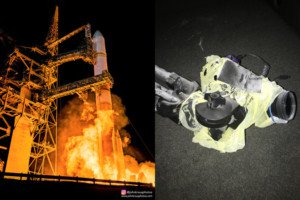
Photographer John Kraus has brought rocket launch photography back into the mainstream. His photos regularly go viral online, and we’ve shared several of them here on PetaPixel as well. But these incredible shots come at a price, as he showed us yesterday.
Photographer, weird lens expert, and friend of PetaPixel Mathieu Stern created this very simple and straightforward Photoshop tutorial for anybody out there who wishes they were a Jedi and wants to impress their friends.
Russian photographer Andrew Osokin is a master of winter macro photography. His photo collection is chock full of gorgeous super-close-up photographs of insects, flowers, snow, and frost. Among his most impressive shots are photographs of individual snowflakes that have fallen upon the ground and are in the process of melting away. The shots are so detailed and so perfectly framed that you might suspect them of being computer-generated fabrications.
Back in 1908, a landslide in Western Norway blocked off an entire valley, flooding the farmland and creating what’s now known as Lake Lygnstøylsvatnet. The lake is now a popular diving destination where people around the world come to explore Norway’s underwater Atlantis.
Liberia-born and Los Angeles-based fashion model Deddeh Howard wants to promote more racial diversity in fashion advertising. For her new photo project, titled Black Mirror, Howard faithfully recreated major ad photos from top brands with herself as the model.
Here’s an amazing short film titled “The Old New World” by photographer and animator Alexey Zakharov of Moscow, Russia. Zakharov found old photos of US cities from the early 1900s and brought them to life.
TIME magazine revealed this week that President-elect Donald Trump has been selected as its Person of the Year. After seeing the cover design, people immediately began to point out that the “M” in the TIME logo appears to form horns on Trump’s head.
My name is Jeff Cable, and I’m a photographer based in the San Francisco Bay Area. I previously spent many years of my life as Director of Marketing at Lexar dealing with the ins and outs of the memory card business. And in all that time, I have never written about the do’s and don’ts of memory cards. Now that I am not on that side of the business any more, I feel that I can write this objective piece for you without any conflict of interest.
Fotodiox sells a wide range of adapters for using lenses and cameras of different mounts, but one particular adapter is causing a major headache for both photographers and the company. At least two photographers are claiming that their Sony mirrorless camera was ruined by the Fotodiox Fusion SmartAF Nikon to Sony adapter.
CDs… remember CDs? Me neither. But they were apparently a thing for a while, and if you have a box cutter and an old CD case lying around, you already have everything you need to make this fun DIY star filter to spice up your Holiday shots.
As a photographer, you obviously want to spend your time focusing on your passion: capturing great images, being creative, and making art. Unfortunately, in our connected world, photo security is a very real concern.
Adobe just announced its latest update to Lightroom CC. Aside from new camera support and performance improvements, the main feature found in version 2015.8 is the introduction of the new Reference View.
This is an older video (2014… practically prehistoric in social media terms), but if you’re looking for a totally different take on the “one second of video per day” idea, this is it. Musician …
“Yet to an obsessive his obsession always seems to be of the nature of things and so is not recognized by what it is.” Those words, written by art critic John Berger in his book Ways of Seeing, annotate one part of his understanding of the history of oil paintings: it’s obsessive tendencies toward showmanship of what one has, and the relationship between property and art.
Social media have so thoroughly infused our everyday lives that calling them “ubiquitous” seems inadequate. Facebook, Twitter, Instagram, YouTube, Snapchat, and others take up an astonishing amount of our time, bandwidth, and attention, and have become indispensable business and marketing tools as well.
Five years ago I was somewhere in the wilds of central Vietnam, about to click upload on my first ever video project. If you had told me then that, in just a handful of years, I would be contributing to one of the entertainment world’s most prestigious and popular wildlife documentaries — BBC’s Planet Earth II — I think I’d have had trouble keeping a straight face. But that was before I witnessed firsthand the power of the Internet and a good idea.
The kind of photography I do begins as a moment of theft. Finding the scene, finding your angle, and stealing the moment for yourself. Some photographers are creators. They build a scene, a still life, or arrange their models and angle their lights and create an image from nothing. I’m not one of those photographers. I’m a thief.
For his recent project titled Frozen, photographer Denis Klero shot creative studio portraits of action sports athletes in a way that makes them look like they’re frozen in ice.
National Geographic has announced the winners of the 2016 National Geographic Nature Photographer of the Year contest. The grand prize this year was won by photographer Greg Lecoeur of Nice, France, with his photo “Sardine Run.”
In 2015, Hugo Cardoso embarked on an interesting experiment: built a 35mm slit-scan film camera. That experiment was a big success, which left Cardoso only one choice going forward… go bigger! So he hunkered down at his work bench and set about creating a medium format version.




